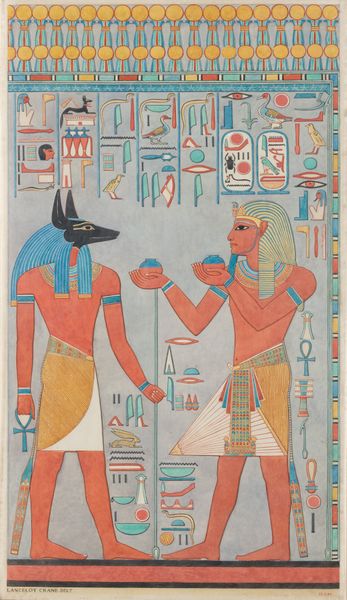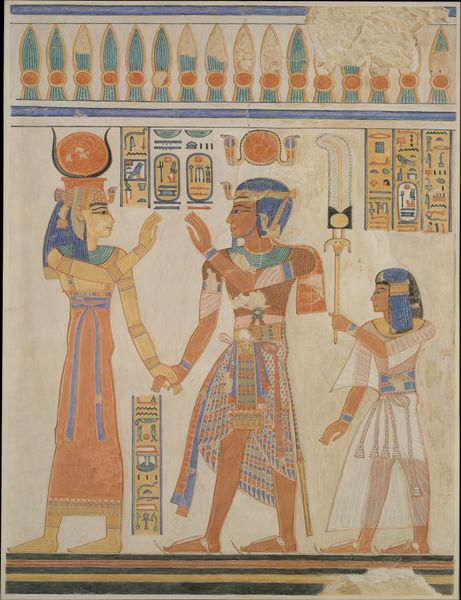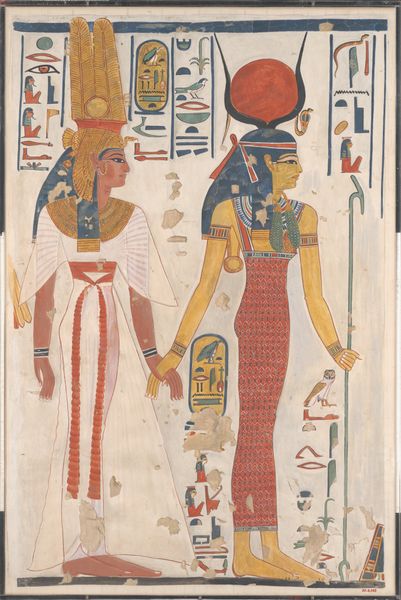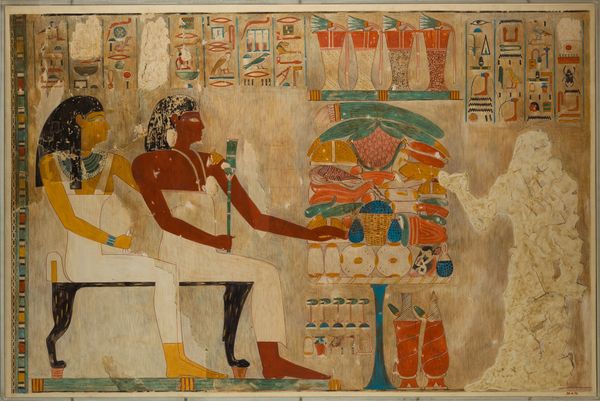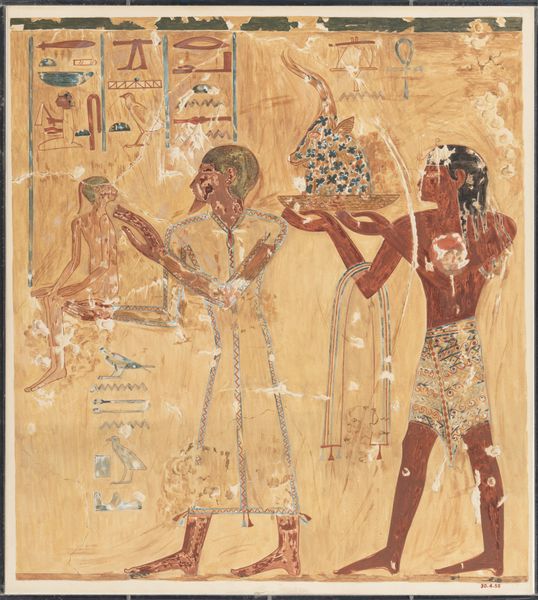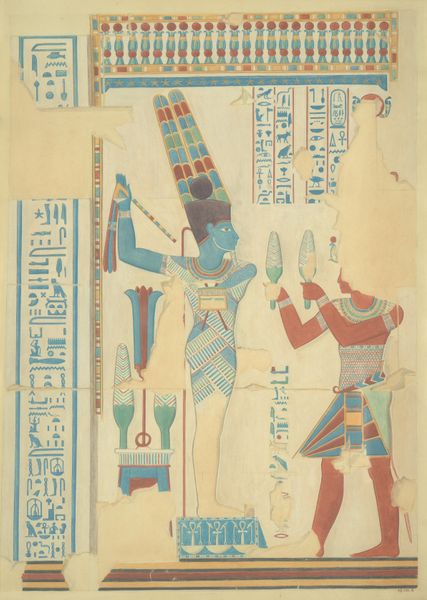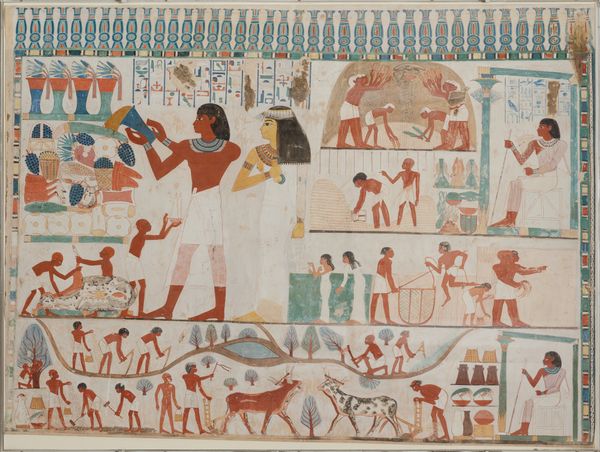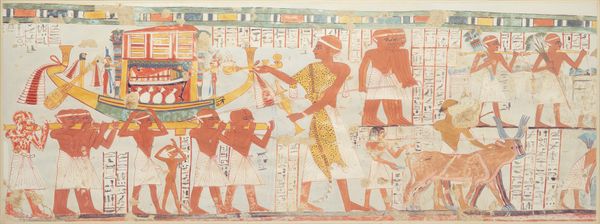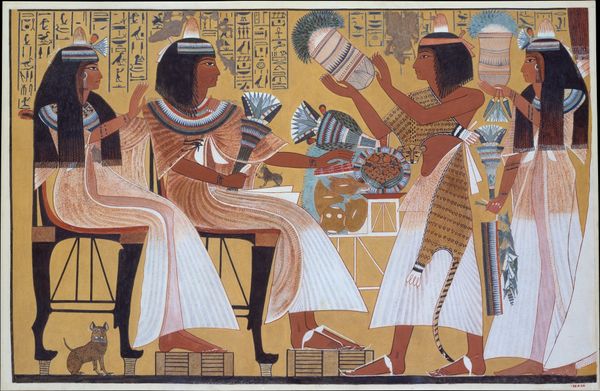
tempera, mural
#
portrait
#
tempera
#
ancient-egyptian-art
#
figuration
#
mural art
#
ancient-mediterranean
#
history-painting
#
mural
Copyright: Public domain
Editor: This tempera mural, "The King with Isis" from the Tomb of Haremhab, dates all the way back to 1295 BC! The piece is so vibrant. What immediately strikes me is the formality of the poses, but also how accessible it feels as a portrayal of power. What can you tell me about its historical context? Curator: Well, looking at this piece through a historical lens, it's less a simple depiction of power and more an active negotiation of it. This wasn't simply art for art's sake; it was deeply intertwined with socio-political strategies. Consider, where was this mural located, and for whom was it intended? Editor: It's in a tomb, so presumably, for the deceased and perhaps the gods? Curator: Precisely. The image wasn't created for a public gallery, but for a space mediating between the earthly and divine realms. It performs a specific function in maintaining Haremhab's status and ensuring his passage to the afterlife. The meticulous rendering of Isis, offering protection, reinforces this. Notice the prominence of hieroglyphs too; these aren't just decoration, but text designed to be read and activated within this specific cultural and institutional setting. Does knowing its function within the tomb change how you perceive the artwork's "accessibility?" Editor: That's a great point. Now I see the work's visual language and even the figures' gazes direct viewers—then and now—to actively construct a particular image of kingship. So, the mural has power not only because it depicts royalty, but because it performs a social and spiritual function! Curator: Exactly! And that performance is carefully orchestrated by the visual choices and placement of the artwork within the tomb's ecosystem. Now how does this inform our understanding of ancient Egyptian power? Editor: I see it now. This isn't just a static portrait; it's a dynamic assertion of power, constantly being reactivated by its viewers, then and even now. Curator: Precisely. Understanding the historical context and intended audience opens up new avenues for appreciating its multifaceted meaning and lasting influence.
Comments
No comments
Be the first to comment and join the conversation on the ultimate creative platform.
